You may be thinking the same thing a lot of gun owners are thinking, and that is, “Should I purchase another gun?” After all, the economy is shaping up and frankly, the gun companies prepared for the worst scenario last year and produced a lot of guns – thinking that they’d sell them to people who wanted to buy ARs or other types of guns before Hillary made these guns unavailable. Over the next several days, this multi-part series will walk you through not only the world of ARs, but also why you might want to consider buying one and what the world of AR is really all about. Welcome to the first installment in our series titled “All About ARs.”
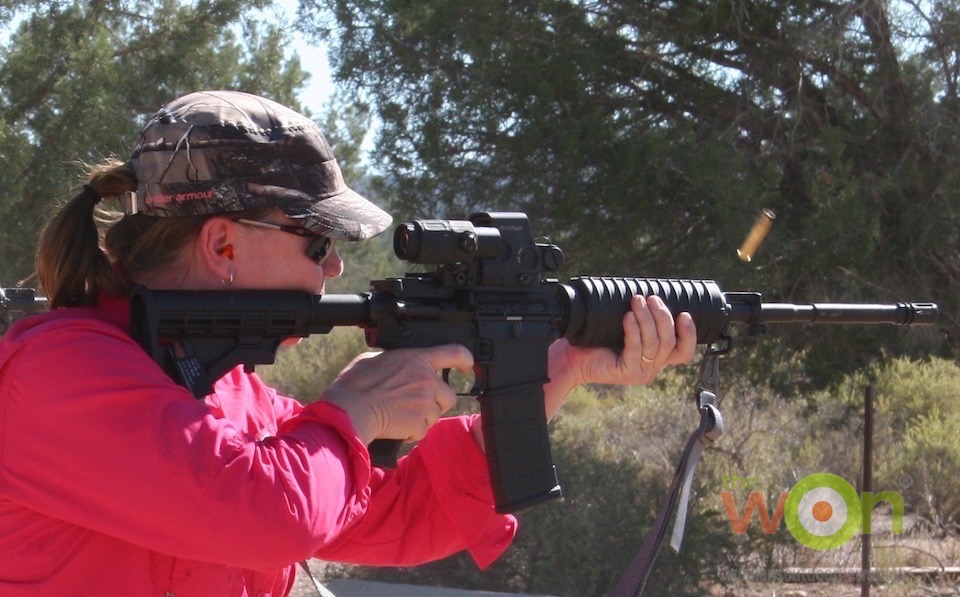
A few years ago, Remington Outdoor Company hosted a writers’ event at Gunsite Academy where we shot Bushmaster ARs. (Jessica Kallam photo)
It’s Not an ASSAULT RIFLE
Let’s be clear. AR does not stand for Assault Rifle, nor does it stand for Automatic Rifle. Never has. Never will. It stands for ArmaLite, a company that launched in 1954 as a division of Fairchild Engine and Airplane Corporation in California. Since World War II, there had been little change in the development of small arms (rifles, especially). ArmaLite designed a rifle for the Air Force, the AR-5 .22 Hornet Survival Rifle (MA-1 Survival rifle). It was a success. ArmaLite later licensed the AR-10 and AR-15 to Colt, which sold the first select-fire M16 military version of the civilian AR-15 to the US Army in 1964 during the Vietnam Conflict. Initially, many troops despised this gun because of its reputation for jamming during combat operations. Once it was discovered that the jamming was a result of a change in the type of smokeless powder used in the ammunition, and that troops were poorly trained and equipped to clean the rifle properly, the jamming problems went away and the rifle gained support. The history of ArmaLite is interesting and swings along with our various military conflicts. Around 1963, the gun was starting to be marketed to the general public as a sporting rifle. The company folded in 1983, but rose again in 1996, and today makes AR-15 and AR-10 rifles, as well as an AR-50.
ARS are MSRs
Nowadays, we might call these types of rifles ARs, but we can also refer to them as Modern Sporting Rifles (MSRs) because of the multitude of their uses in the shooting sports. The platform has been available to the public for about 50 years. Unfortunately, because the AR came from the military side of rifle development, hoplophobes brand each example as a military weapon. In their minds, no private citizen has any business owning or using an AR. Some folks afraid of firearms and firearms owners conveniently ignore the fact that many firearms designs and technologies originating with militaries have found use in civilian sporting arms for the last couple of hundred years.
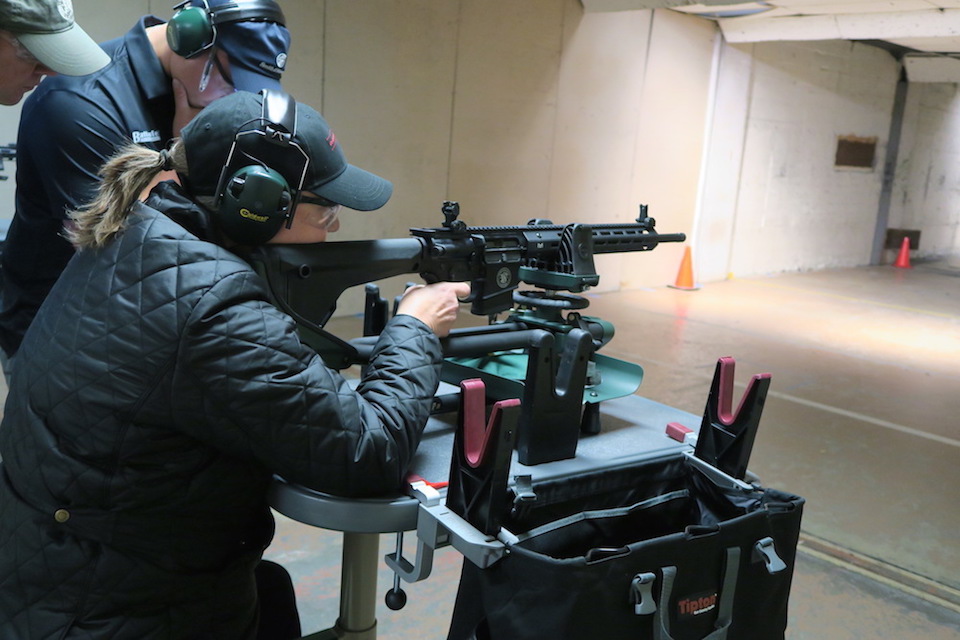
I had the privilege of shooting Smith & Wesson’s M&P15 MOE MID in Stealth Grey last December at its headquarters in Springfield, Mass. Review to come. Retail is $1259. (Julie Golob photo)
Why Women Will Like this Platform, Even with Its ‘Reputation’
I call it a platform, because the gun is like your body – your body has a basic framework that you shoe and clothe depending on your choice of activity. The AR has a basic framework, too, and you can adapt the AR in a similar fashion. We’ll consider various parts of its anatomy in #2 of this series. Here’s why women will like this gun: It is one of the most changeable and adaptable guns. Most of the parts that we need to make a gun fit us have already been produced and all we need to do is put the right pieces together for a good fit.
The AR-platform is not only great for competition shooting, target shooting and hunting, but also for self-defense. Pull this gun from the back seat or gun safe when you need it, and there’s no doubt that you mean business. It’s a clear demonstration that you are a self-protector and you will defend your family and friends.
These guns also offer low recoil in .223 Remington or 5.56 x 45 NATO calibers (some rifles are made to fire both), adjustable stocks and light weights – which all combine to make the firearms extremely user friendly. These were the original chamberings. Companies are adding more and more calibers to the lineup, particularly because of the demand for MSRs used in hunting and sport shooting competitions. One may chose a 450 Bushmaster or .308 Winchester to hunt feral hogs, or a 6.5 Creedmore to compete in long-range shooting. There are several other calibers available, too.
Women are warming up to rifle shooting. The 2016-2017 National Shooting Sports Foundation Reference Guide reported that in 2016 the number of female participants in the target shooting category increased by 15.2% in the past 10 years.
From a Basic Gun to a Ferrari Type Firearm
One thing about ARs is that you can get some extremely good deals on them right now, from those aforementioned companies that went all out in production last year, ramping up for sales that didn’t materialize. In fact, you could say that the market is soft. Like a marshmallow.
That’s where you come in. If you decide you want an AR for whatever reason, it’s the time to buy one. You can find basic models, such as these, for under $1,000. These come with all the necessary parts, but you can still accessorize and change out parts later, if you want. You can also find what my pal, Kenn Blanchard, calls the “Ferraris” of firearms, such as LWRCIs or more expensive models from other major gun manufacturers. In the meantime, here are some that will cost under 1k:
 Remington R-15 VTR Predator: $893
Remington R-15 VTR Predator: $893
 Bushmaster XM-15 Standard A2: $969
Bushmaster XM-15 Standard A2: $969
 Ruger Model 8502: $799
Ruger Model 8502: $799
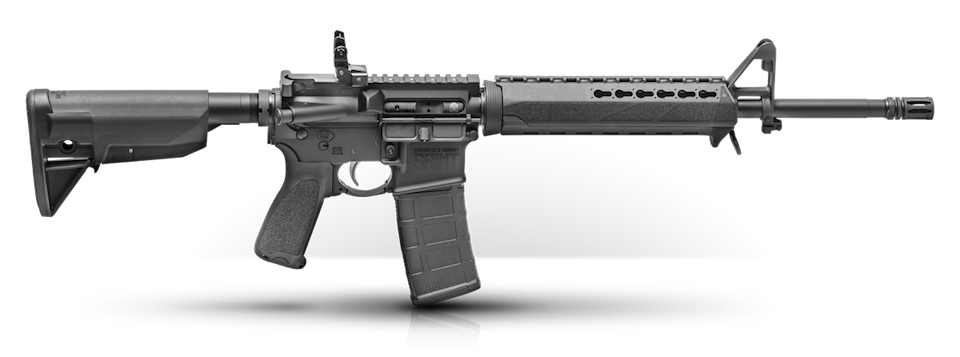 Springfield Armory Saint AR-15: $899
Springfield Armory Saint AR-15: $899
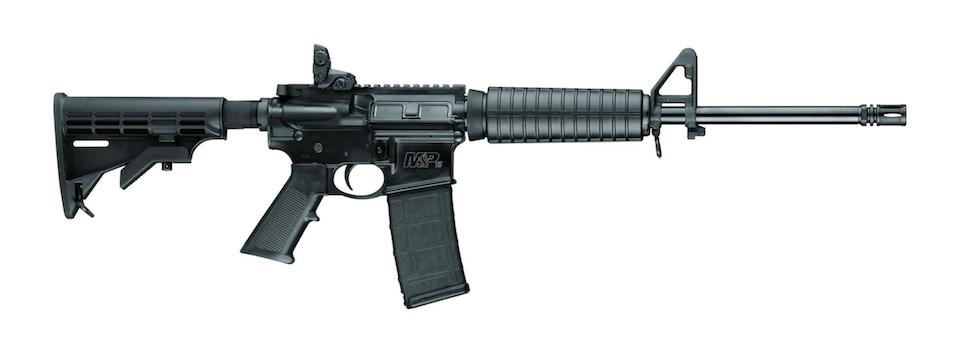
Smith & Wesson M&P15 Sport II: $739
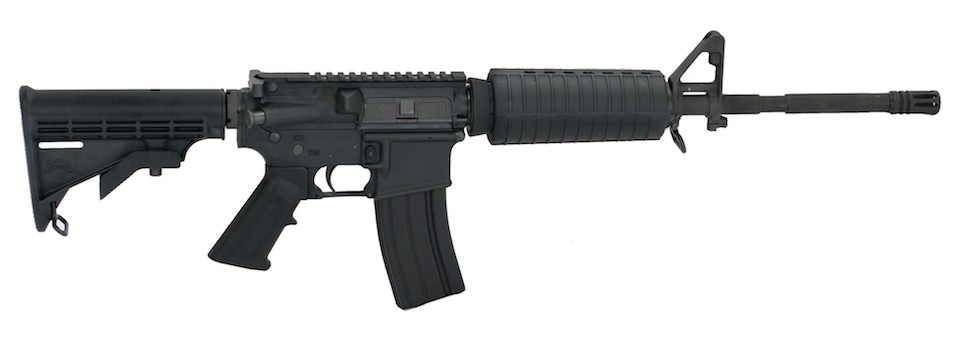 Palmetto 16” Freedom Rifle: $599
Palmetto 16” Freedom Rifle: $599
 Savage MSR 15: $852
Savage MSR 15: $852
Check your local gun stores. They are running summer sales that are hotter than a jalapeno’s armpit.
Also, remember that you can shop online in the comfort of your home, and order the gun to be sent to your Federal Firearms Licensed (FFL) dealer.
In our next installment for “All About ARs,” we’ll be looking at parts of an AR.
Publisher/Editor Barbara Baird is a freelance writer in hunting, shooting and outdoor markets. Her bylines are found at several top hunting and shooting publications. She also is a travel writer, and you can follow her at https://www.ozarkian.com. View all posts by Barbara Baird